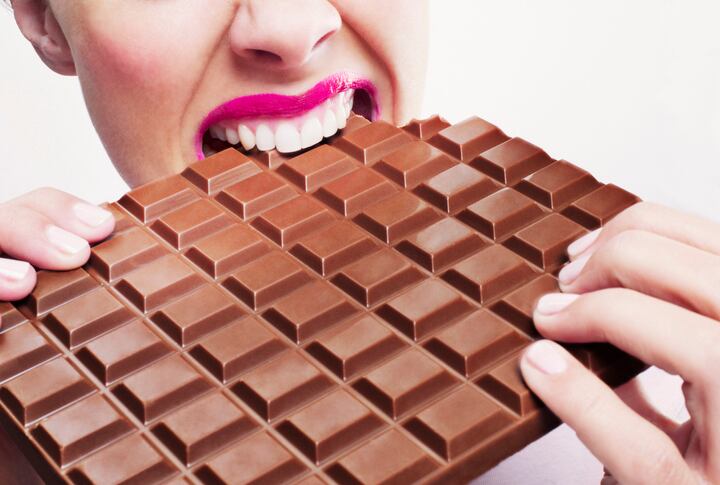The Austrian researchers analysed the meals, snacks, and drinks that made an appearance in posts and videos by six of the most popular German-speaking influencers with teenagers aged 13-17 years, with a combined total of more than 35 million followers or subscribers.
They found that 75% of the featured food and drinks were high in salt, fat, or sugar and would not be permitted for marketing to children; and the majority were not clearly signposted as adverts.
Chocolate and sweets were the most commonly featured products influencers posted about.
Dr Maria Wakolbinger and Dr Eva Winzer, from the Medical University of Vienna, claimed the findings highlight the ‘urgent need for policies and effective regulation of influencer marketing to children’.
“How can we expect our children to eat healthily when content on social media is skewed to promote foods high in fat, salt, and sugar?”, asked Dr Wakolbinger. “Influencers have huge power over what young people feel is relevant and appealing. Our findings suggest that most of the time, influencers are not flagging when their posts are adverts—it’s imperative governments take notice.”
Childhood obesity on the rise
Nearly one in five children or adolescents around the world are currently overweight or obese, according to WHO.
A new report by the WHO European Regional office claims Some 60% of European adults are overweight or obese, with nearly one in three children living with overweight or obesity.
In Germany, over 15% of children between the ages of 3 and 17 are overweight or obese, estimates Berlin’s Robert Koch Institute.
The marketing of unhealthy products is recognised as an important contributor to unhealthy weight gain in childhood—affecting children's food preferences and eating behaviours, said the researchers, who presented their research at this year’s European Congress on Obesity (ECO) in Maastricht, Netherlands (4-7 May).
Therefore, restricting children's exposure to such marketing is an important global priority for preventing obesity. However, little is known about the frequency and content of visual displays of food and beverage products featured by influencers in German-speaking countries.
Social media under scrutiny
To provide more evidence, researchers analysed the social media posts of food and drinks on TikTok, YouTube, and Instagram by six German-speaking influencers (three female, three male). The influencers were chosen based on having more than 100,000 subscribers or followers on all three platforms, their popularity with young people aged 13 to 17 years, and German content.
They analysed the last 20 videos or posts uploaded by each influencer before 1 May, 2021. Multiple items appeared in some posts. Each food or drink item was coded either as ‘permitted’ or ‘not permitted’ for marketing to children using the WHO Regional Office for Europe’s nutrient profile model—a system which ranks products on their healthiness based on their levels of sugar, salt, and fat, fibre. Researchers also assessed whether advertising content was being properly disclosed.
Of the 364 videos/posts (almost 13 hours of footage), a quarter featured food or drinks (409 products)—including half of the videos on YouTube, nearly a fifth (17%) on TikTok, and 7% on Instagram, equivalent to an average of 18 products per hour.
Based on the WHO nutrient profile model, 75% of the featured foods and drinks were considered unhealthy and should not be marketed to children; 17% were permitted; and 8% could not be determined due to a lack of nutritional information or did not fit into either category.
Chocolate and sweets were the most commonly posted about food—making up almost a quarter of posts. Ready-made convenience foods accounted for 9% of posts.
Over half (53%) of the products were described and presented positively by the influencers, 42% neutrally, and 5% negatively. Almost three-quarters (73%) of the products were shown being consumed by the influencers themselves.
In 60% of the videos, the product was mentioned in the video description. Of those, 19% of the videos mentioned the brand name or company, and 41% mentioned the food itself. However, just 11% of the videos disclosed the product as an advert in the video description, and only 3% in the video itself.
“We must crackdown on social media and challenge the role of influencers in junk food marketing,” added Winzer. “This is where regulation can come into play. Spain has recently announced plans to ban influencers pushing unhealthy food and drink to children, but in most countries there are no restrictions on the marketing of unhealthy foods on websites, social media, or mobile applications. Governments must adopt a comprehensive approach, targeting multiple media channels to ensure our children are encouraged to make healthy lifestyle choices.”




